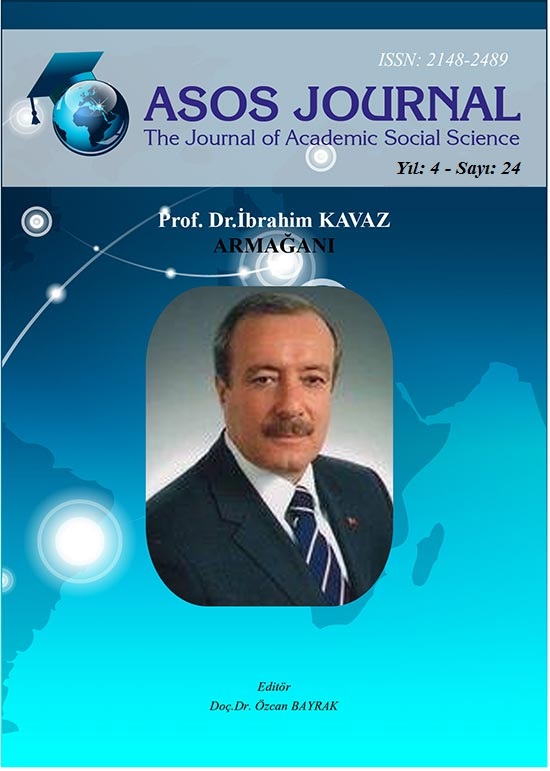Author :
Abstract
Toplum hayatına ilişkin kültürel ve sosyal unsurlar, çeşitli sembollerle sözlü kültürle birlikte şiirlerde de yer edinir. Bu semboller, şairlerin imaj dünyalarını yansıttığı gibi aynı zamanda toplumların yaşam tarzlarını ve kendilerine ait özellikleri hakkında da ipuçları verir. Nitekim at da bir imge ya da sembol olarak
Keywords
Abstract
Cultural and social elements associated with social life appear within poems and verbal culture through various symbols. These symbols reflect the worlds of image possessed by the poets while they give clues about the lifestyles of societies and their particular characteristics. As so, the fact that horse is an element that contains the characteristics of Turkish culture provides it with a wide scope of use as an imagination or symbol in the Classical Ottoman Poetry. Horse is a commonly used figure in the qasida of the Ottoman (Divan) Poet Nef’i. The similarity between the characterizations of horse in his poets and the meaning properties placed on the concept of horse by the Iranian poet Urfî is attracting. In this article, embarking from some qasida the similarities and differences between the various notions of horse existing in Nef’î’s world of poem will be explored particularly within the framework of ‘impression’.





